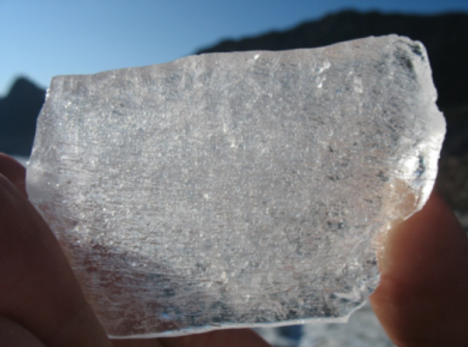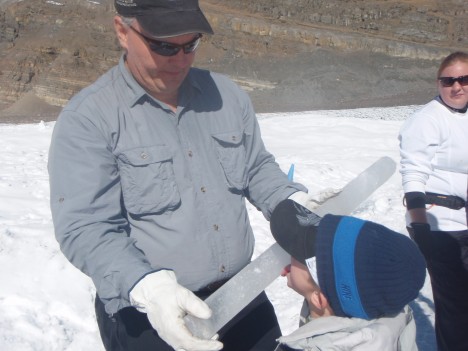

By Summer Ruper
Hello SEAT blog followers. I am Summer Ruper, and I would like to share with you a little bit of the ice coring adventure that begins well before the field team heads to Antarctica. Before we start drilling ice cores in the harsh cold and wind of Antarctica, we have to train our field team on the drill and sampling procedures. To do this, we took a trip to a slightly warmer region with ice: Athabasca Glacier in the Columbia Ice Field. Athabasca Glacier is near the Canadian town of Banff, and is one of the most visited glaciers in the world. It’s a beautiful area, and plenty of ice to play with.
To begin, we must first answer the question: What is an ice core? Simply put, it is a core sample collected from a glacier or ice sheet. But the ice core is not entirely made up of ice; with the snow fall and wind also come dust, salts, and even ash from volcanic eruptions. All of this is contained in the ice cores and provides information about how snowfall, temperature, and winds have changed over time. A lot of important information is buried in the ice and snow on glaciers and ice sheets, but you have to get the ice out in order to get at that information.

In order to collect the ice cores, we use a specially designed ice core drill. The one we use is called the FELICS, and is designed and manufactured by Felix and Dieter Stampfli in Switzerland. Basically, the drill has a sharp ring on the end that cuts the ice and feeds the core into a one-meter long barrel. We pull the one-meter section up, empty it out of the barrel, and then drill another one-meter ice core from the bottom of the hole. We do this over and over again until we have drilled to a depth of about 20 meters, and have about 20 one-meter long ice cores.

On Athabasca Glacier, our field crew learned how to operate the drill, handle the ice cores, and generally deal with problems that might arise. We were also able to show the tourists visiting that glacier how the drill worked, let them see (and taste) the ice, and share a little of our knowledge and excitement about glaciers and the environmental records contained in the ice. We had a lot of fun, and Jessica and Randy are excited to transfer this experience to our work on the Antarctic ice sheet soon.


In another post, we will show you what we do with the ice cores once they return to the lab and share some of our preliminary results from last year’s ice cores.
